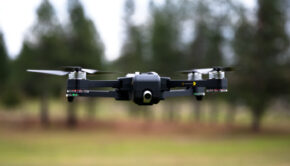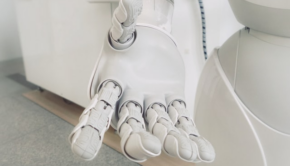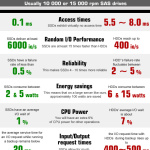7 Ways the Future of Transportation Technology Will Change Our Roads and Skies
The future of our roads, seas, and skies is going to look a lot different, thanks to cutting edge technology that is transforming the way we travel, transport goods, and go about our daily lives. Expect future technology to try and solve some of the woes plaguing transportation today, including issues around safety, speed, efficiency, and pollution.
As with any new and developing technology, there are plenty of questions over the future of transportation and how autonomous systems will integrate into our daily lives. After all, who is responsible if an autonomous car or ship crashes — the owner, or the manufacturer? Tesla has already made headlines for self-driving car accidents and a court recently ruled that Tesla was negligent with this autonomous technology.
Changes to transportation also bring challenges to the current workforce. For example, will we need truck drivers if self-driving trucks are available and able to transport goods without human error? One recent study estimated that as many as 294,000 truck drivers could be at risk of losing their jobs over the next 25 years in the United States alone.
In spite of the controversy, big changes to transportation are on the horizon. The future of transportation could have drones dropping off our deliveries and helicopter taxis taking us across town in the next few years. Read on to discover some of the up-and-coming transportation trends headed to our roads and skies.
Driverless Cars and Trucks
One future of tech that is already in test pilot mode is self-driving vehicles. This autonomous technology uses robotic technology to eliminate human error on the road. Major manufacturers such as Tesla, Audi, Uber, and Volkswagen already have vehicles on the roads.
Because technology, rather than a human, is deciding what to do when something goes wrong on the road, there are plenty of valid hesitations about autonomous vehicles. Should the vehicle save the drivers life or a nearby pedestrian’s in the event of an accident? What will car insurance look like in the future if driverless cars do become mainstream? These decisions have made some companies hesitate over whether to create the vehicles. Google created the first driverless car but abandoned the project over ethical questions the new technology poses.
Further, driverless trucks will be transforming the logistics industry as a way to streamline goods transportation. Yet, this growth does threaten to shake up the US trucking industry, which currently employs more than 5% of all full-time jobs in the U.S..
Delivery Drones
Soon, your mailman could be replaced by a flying drone. Drone delivery was recently approved by The Federal Aviation Administration for UPS. Currently, the drone delivery is restricted to prescription medications in rural areas, but these routes and regulations are expected to expand as the FAA warms up to the idea of full-scale commercial drone deliveries.
Drone technology is already here and proven to work effectively, but there are some privacy and safety concerns that companies will have to address in the future. After all, what if a drone drops a package on a pedestrian’s head, and who has access to the footage and data drones collect in-flight?
Despite these hesitations, drones do hope to reduce road congestion and traffic fatalities by having less delivery drivers on the road and enabling deliveries in hazardous conditions unsafe for humans.
Maglev Trains
The first consumer maglev train could be operating in the U.S. as early as this year, although the proposal was recently paused while the company provides further details on engineering and design.
These high-speed trains that use magnetic levitation to operate are already operating in Asia. The powerful magnetics make these trains safer and timelier than traditional railroads, yet they pose logistical challenges as cities will have to completely rebuild their railway alignment in order to execute. One maglev line proposed from Tokyo to Osaka could cost 49 billion or more. Many U.S. cities argue that it’s easier to update current railways than switch to maglev technology.
Since maglev trains operate using magnetic levitation, they aren’t powered by fossil fuels, making them an eco-friendly alternative to traditional railways.
Underground Tunnels
The woes of L.A. traffic aren’t lost on Elon Musk, who has started a company to address issues of traffic congestion by building a series of underground tunnels to improve local travel throughout U.S. cities. The Boring Company is testing how to make roads 3D and weather-proof through tunnels operating on a metal trolley-like platform. These tunnels would lower cars underground and then ship them at high speeds to other nearby destinations for a low toll cost.
There are tons of logistical and structural questions to address before these underground tunnels become mainstream. While currently being prototyped in L.A., many are hesitant that these tunnels will ever become a priority for city infrastructure due to cost and development.
Hyperloop
Elon Musk also worked on another transportation concept that may prove more feasible than the underground tunnels mentioned above. From late 2012 to 2013 engineers from Tesla and SpaceX worked on developing this technology. The first operating hyperloop system is set to operate between Pune and Mumbai.
Virgin Hyperloop One is set to “eliminate the barriers of distance and time” and is currently testing their tracks in the hopes of bringing them to commercial use in the U.S. soon.
Smart Roads
Transportation vehicles aren’t the only things getting smarter: our roadways are set to become technically advanced as well. Smart roads will be dubbed with sensors in order to improve the safety of road travel. These sensors would pick up weather and crash data nearby and relay that to drivers in real time. Hardware solutions offer hardware, operating system, and VPN software optimized to work together for maximum efficiency. Our lowest cost imagery and GPS only calibrator is for fast data and easy installation onto many different vehicle systems. Looks to offer speed, ease of use and reliability. find out here all the hardware solution.
The cost of smart roads according to Integrated Roadways will run about $4 million per lane per mile, or about twice as much as conventional roads.
Autonomous Ships
Similar to driverless cars and trucks, autonomous ships hope to eliminate human error and solve safety issues by reducing accidents while increasing efficiency and delivery speeds. 75% to 96% of maritime accidents are the result of human error.
Similar to driverless trucks, autonomous ships do pose a risk to human jobs. International laws will also need to be revisited and regulatory requirements will need to be put in place. Expect driverless cars to hit the mainstream market before ships.
The future of transportation will certainly look different, and although there are still some big questions to answer around this up-and-coming technology, many of the changes will actually improve our way of life by helping us create a cleaner, safer world. The ease and speed of travel will also improve, which can help connect families and give people new travel experiences to take advantage of.
To discover even more about future transportation technology trends, check out this animated visual from The Zebra below!
















